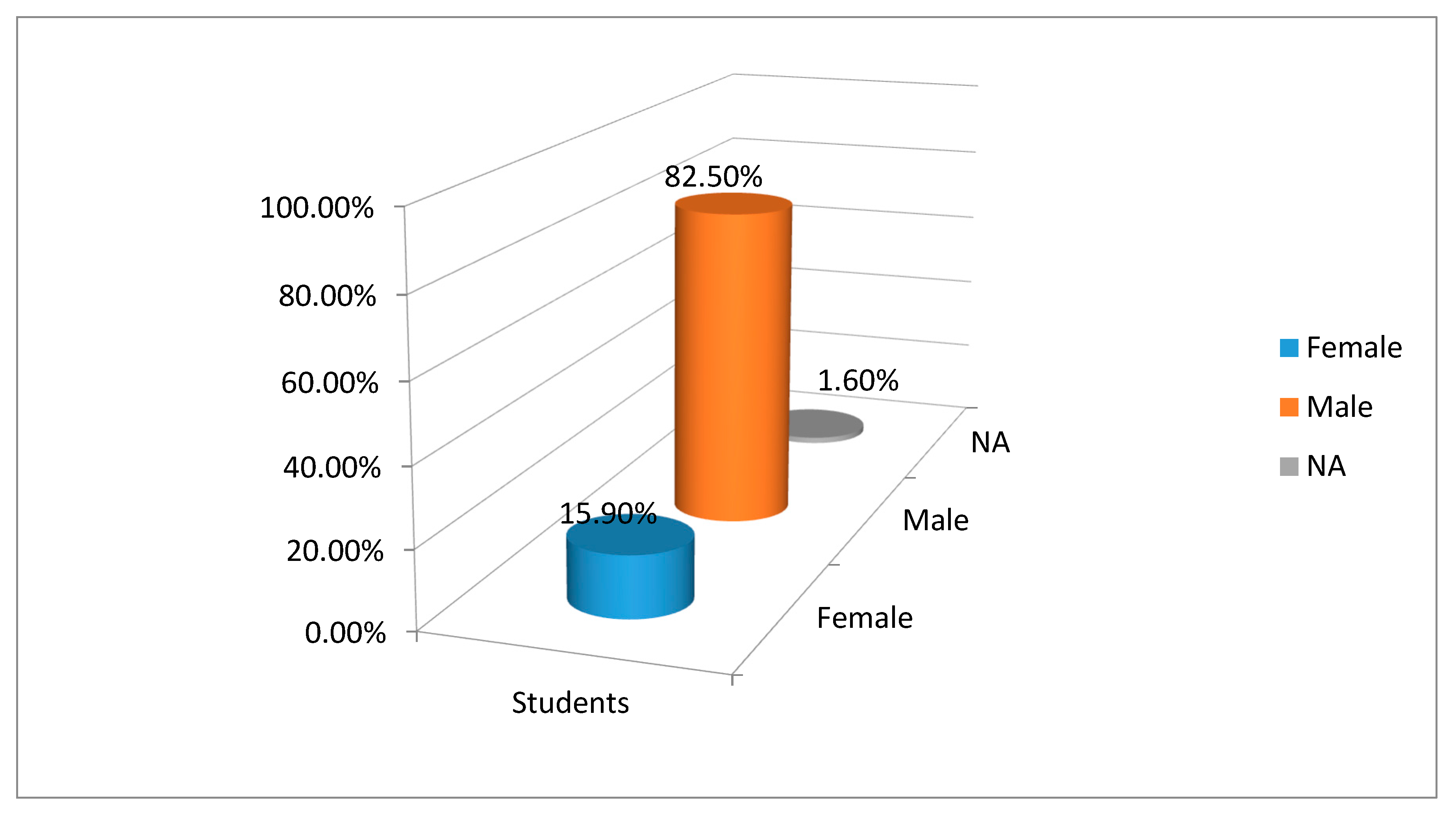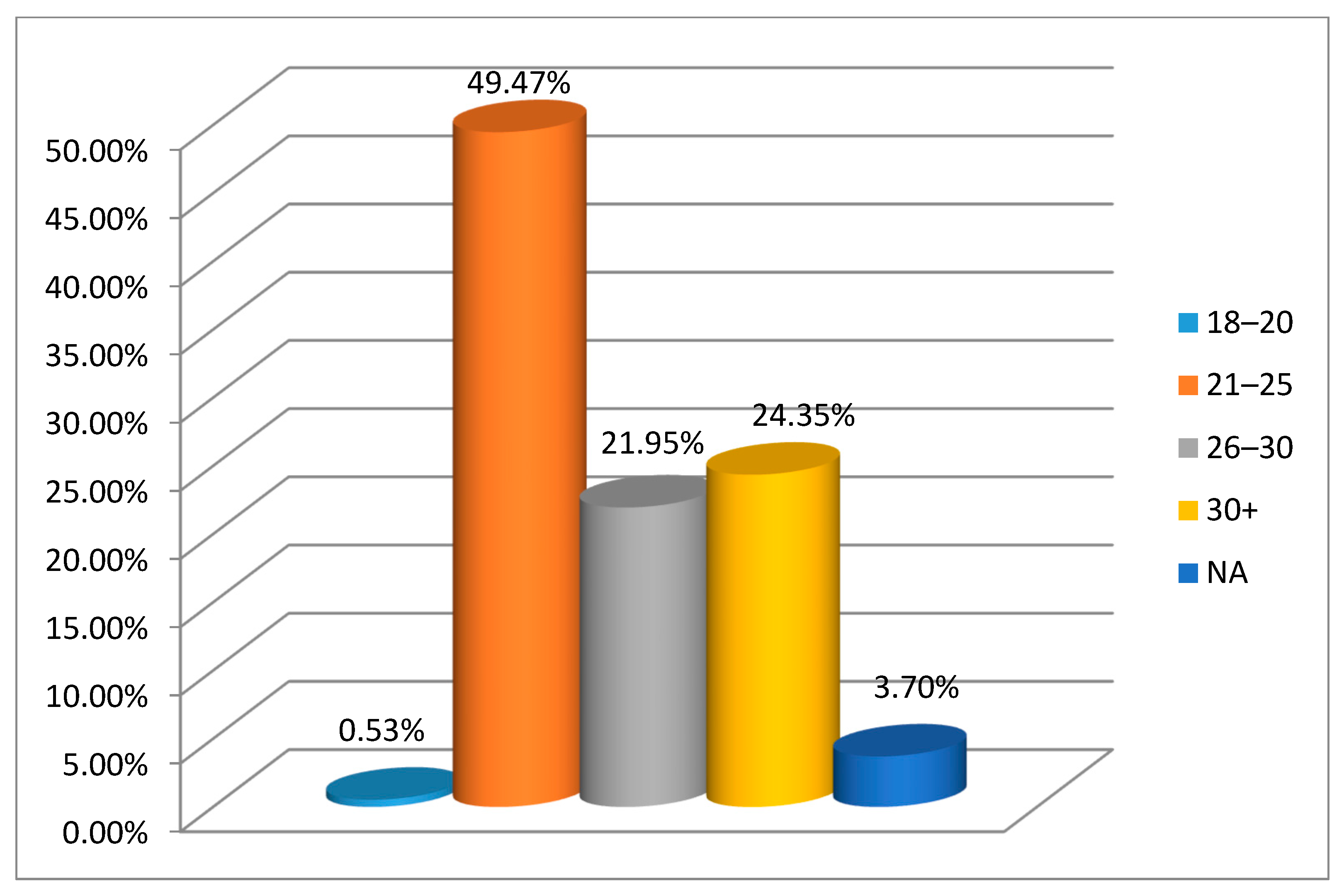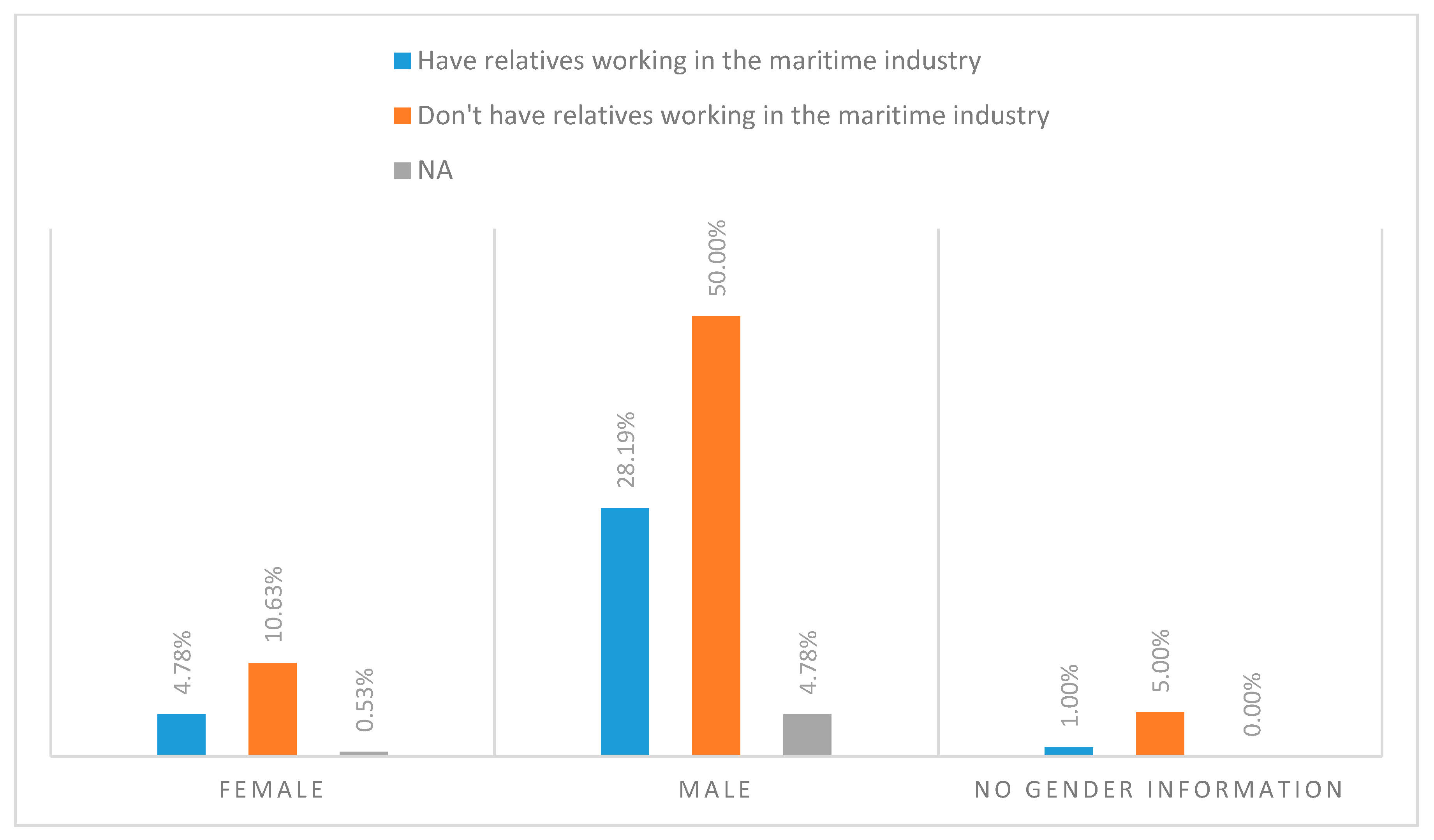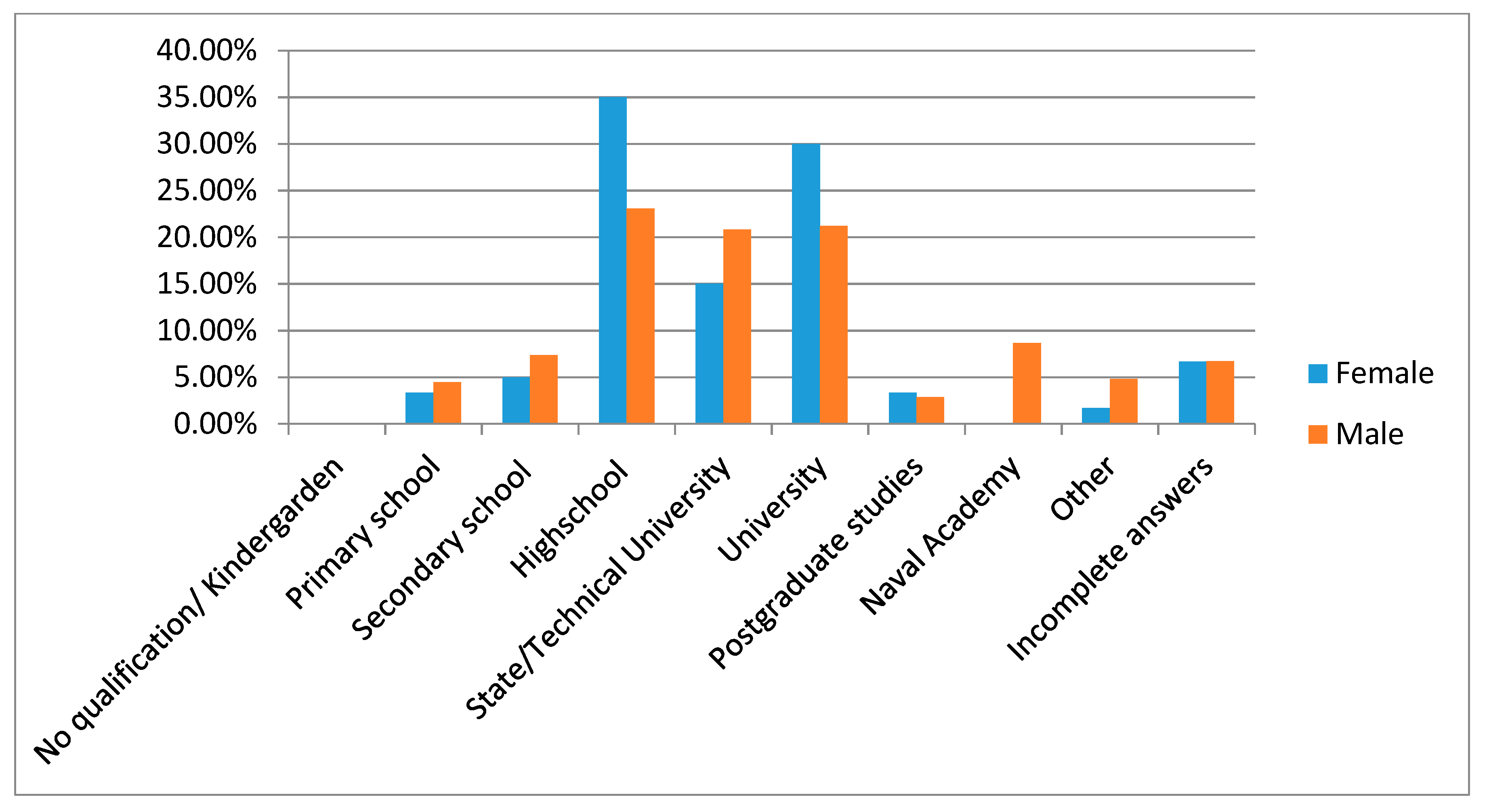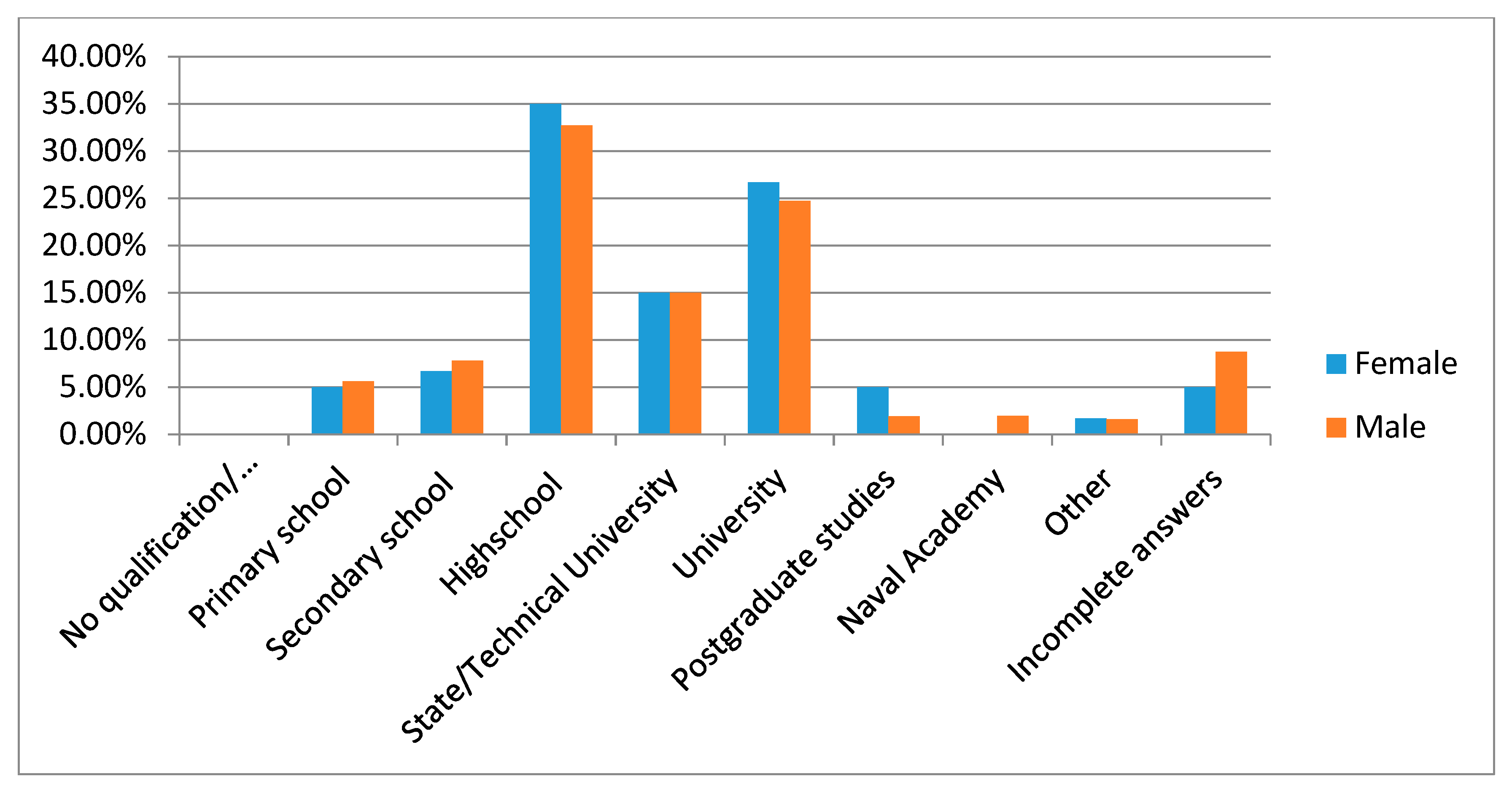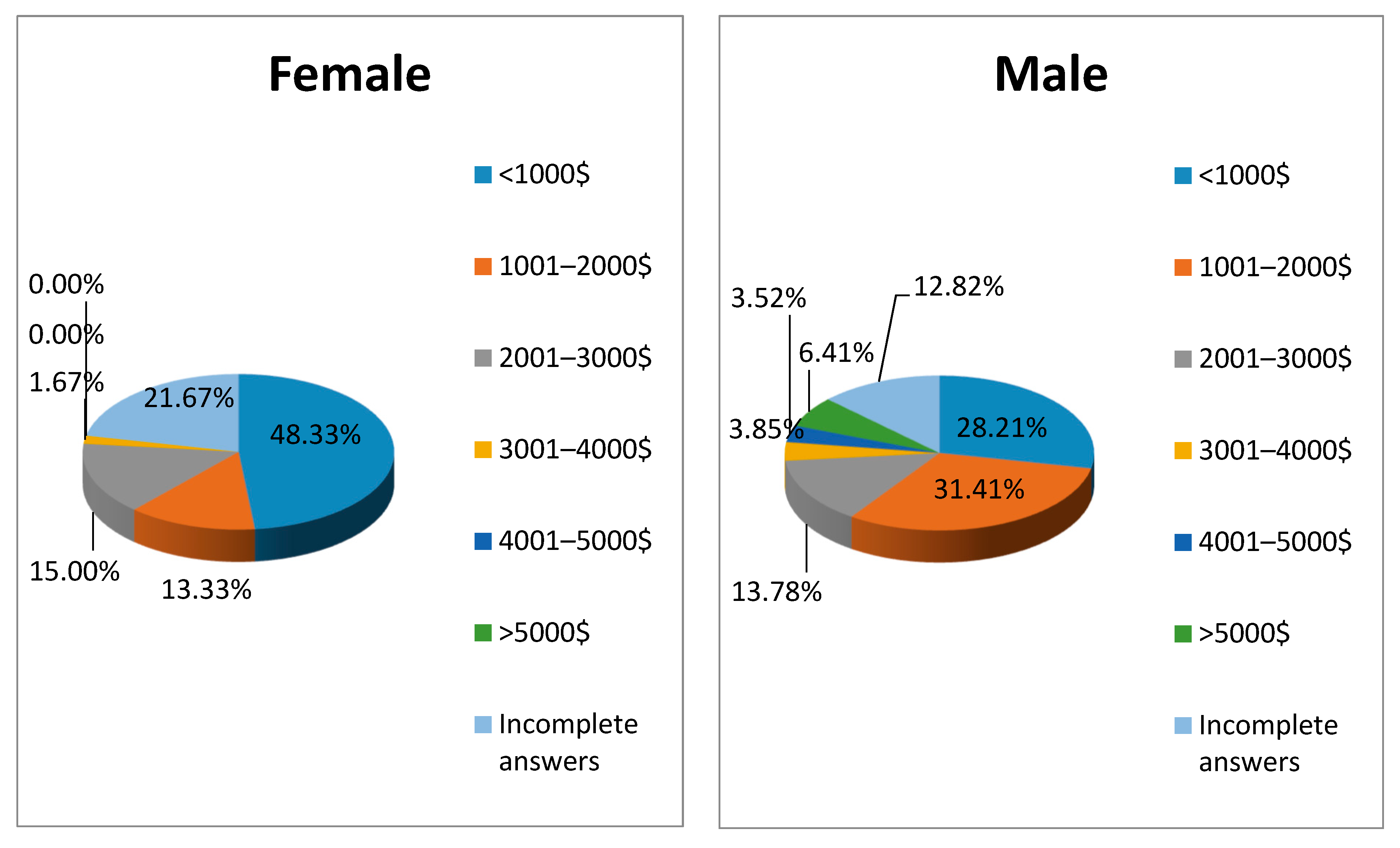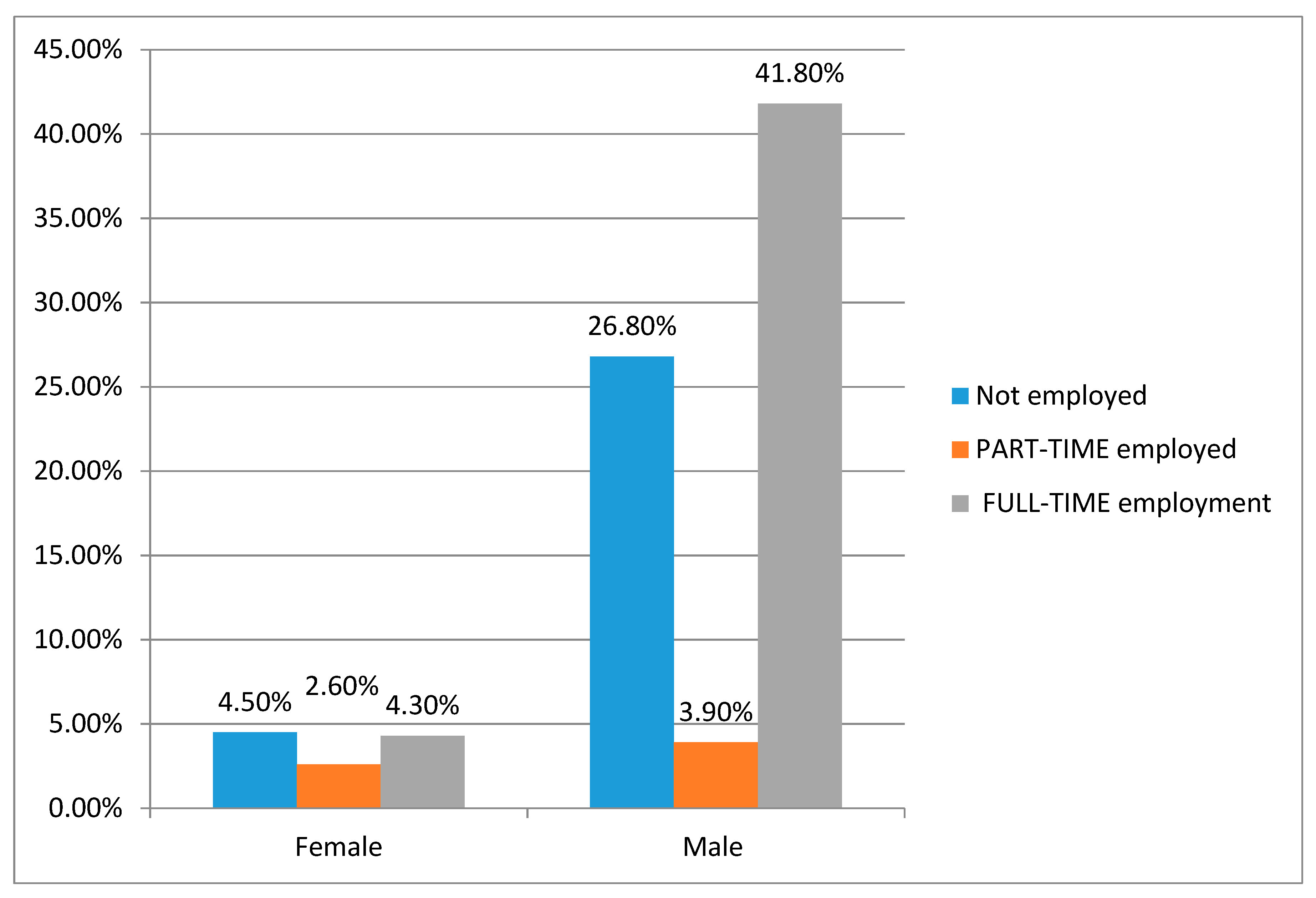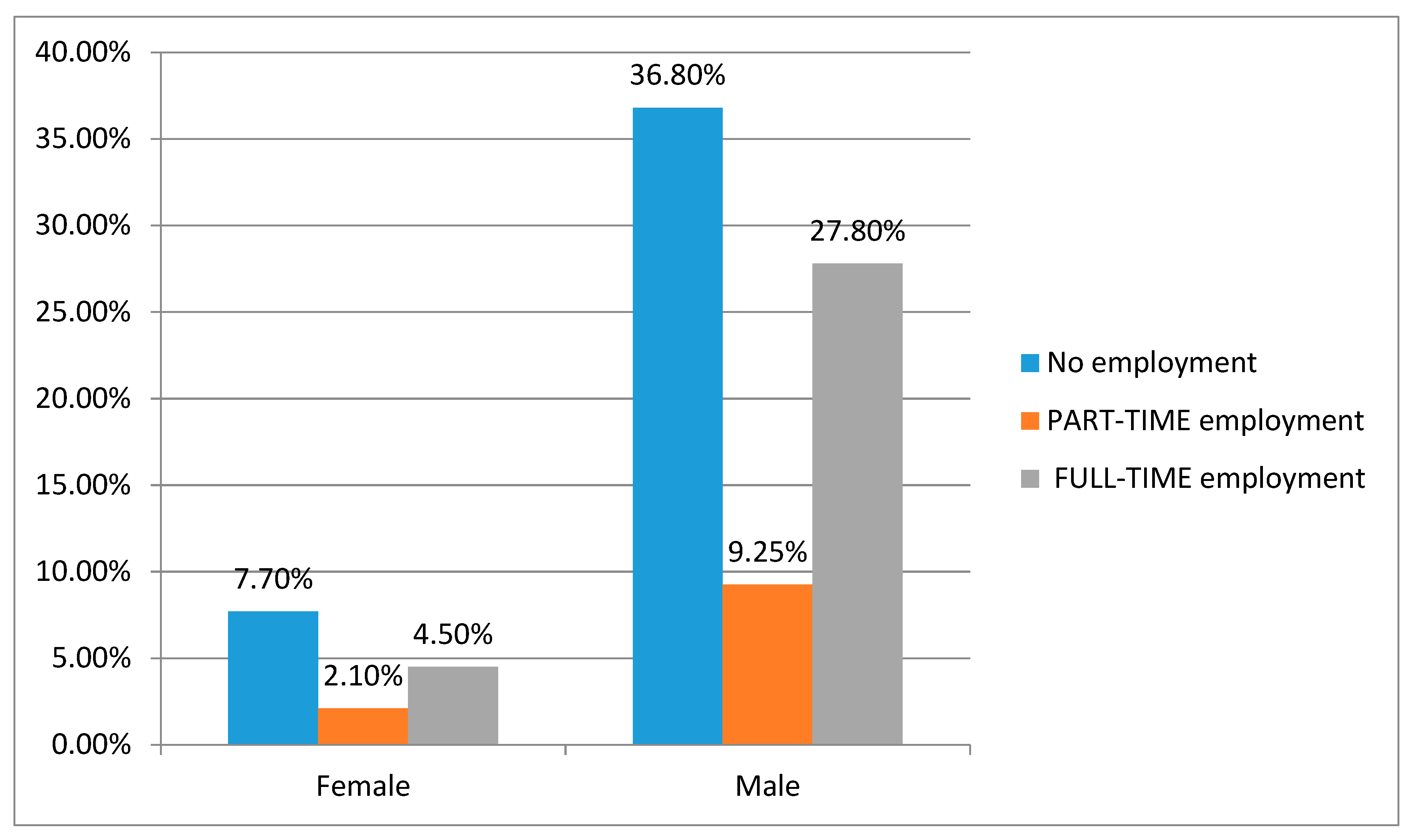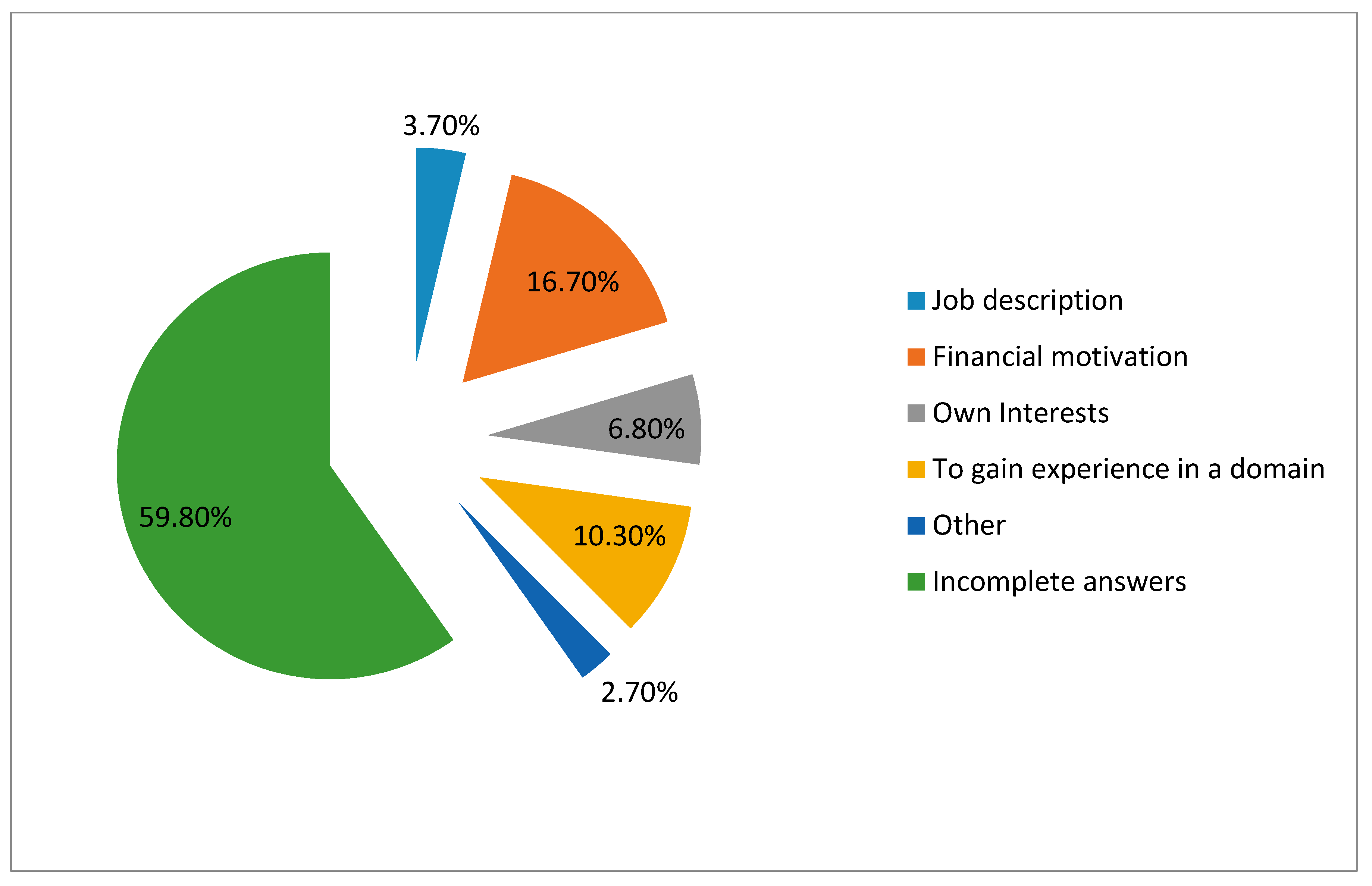1. Introduction
There is a long history of shipping representing a key catalyst for fiscal advancement. Since then, people have been encouraged by the sea, notably for cultural and social development as well as international trading activities [
1]. Smith (1776) [
2] addressed the importance of water transport for market development. In other words, maritime transport enables the delivery of large volumes of shipment with low costs [
3]. Today, the European zone represents a dominant maritime center. The European region controls approximately 33% of the world’s merchant fleet and includes 329 main seaports along its coastline [
4]. Romania is a major player in economic development and the maritime logistics center in the European region, notably as a GATT member in 1971, a WTO member in 1995, and an EU member in 2007 [
5].
The maritime industry is recognized as one of the significant economic pillars of Romania [
1]. In general, Romania has deep sea nature and its excellent geographical position generates a strategic gateway across Pan European Corridors and one of the best hub port positions in the world. Currently, Constanta is ranked among the top 20 short sea shipping ports in the European Union (EU). Recently, Romania strived towards the 2030 Agenda for Sustainable Development by developing the Voluntary National Review. For Sustainable Development Goal 11, Romania aims to create cities that are resilient, sustainable, and safe [
6]. To this end, Romania has produced sustainable improvements in creating a maritime economy after joining the EU in 2007. The illustrative examples are to upgrade the transport infrastructure, promote green energy (i.e., solar, wind, and water), support a circular economy, generate the supporting business and other value-added activities (e.g., wholesale and retail trade, diners and accommodation, restoration and maintenance of transport vehicles), and set up 70 industrial parks (i.e., focus on non-energy-intensive industries) located in northwest, southern, and central Romania. To this end, Romania has large market shares of additional EU transport. In 2018, Romania increased 6.3% of port freight activity among EU member states. Moreover, Romania has high shares of outward movement of cargo of the total movement of tonnes. In addition, the maritime industry has created notable remarkable economic contributions to the nation, such as providing job opportunities, reducing the gaps between the urban and rural areas, and attracting foreign investment [
7]. Over time, Romania has been able to transform into an international maritime logistics hub.
Since the 1970s, technological advancement, the growth of international trade, and complex supply chain management has induced an enlarged operating capacity, equipped with modern technologies and acquiring professionals in the maritime industry. Nevertheless, the operations of equipment and primary maritime activities remain a human engagement even with technological breakthroughs. [
8] addressed that maritime activity is an accumulation of multifaceted services that stimulate the different areas of human existence. The maritime industry is developed on a human element, and investing in human capital is a top priority for industry practitioners. Human capital theory reinforces the relationship between education and improved productivity [
9]. He (2019) [
10] expected that the tertiary students would generate a large pool of innovative human capital in the future. With investments in higher education, it is expected that the industry will evolve from low value-added exportation to high value-added exportation. As a result, higher education produces both the qualitative impact (i.e., fostering the transformation of industrial structure) and the quantitative impact (i.e., speeding up economic growth rates). Even though discussions of automatics and cobots raise certain concerns, human personnel continue to be a key factor in the turbulent and competitive business context. The demand for advanced skilled maritime logistics professionals increased dramatically after the 9/11 terrorist attacks. Reflecting this, identifying the “right talent” is one of the key components that constructs the fundamentals of the maritime industry [
11]. Although the maritime industry is one of the economic upholders globally, a critical issue makes vulnerable the sound development of the maritime industry: a talent shortage and a lack of young generations motivated to join the labor market over the next decades [
8]. This is a time in which we need to revisit maritime programs and adjust the settings of higher education institutions in response to the transformations of the industrial structure [
10].
Significant contemporary maritime programs have concentrated on transport/freight processes, the risk of cargo treatment, import/export business conventions, depot processes, intermodal freightage operations, and practical constitution. Educators have been increasingly worried that maritime studies would continuously “fade out” under a combination of forces including wider belief that the subject is unnecessary. It is crucial to balance academic and pragmatic knowledge when developing new curriculums. However, research that examines the significance of the various impetus in decisions on choosing to launch and embody maritime education has remained relatively limited. Furthermore, the corresponding common attributes of these programs in response to the aspirations of students and graduates have not been investigated empirically. Many existing studies exhibit some common methodological deficiencies. Firstly, many studies did not employ empirical methodologies (for example, empirical data or investigations), and the conclusions oftentimes rest on theoretical discourses. Many are just copious analyses of statutes in the maritime sector as well as the dynamism of modern business circumstances. Students have been given insufficient attention as beneficiaries of educational programs [
12].
In addition, the current study has the objective to analyze the motivation of individuals enrolled in maritime studies. Results were obtained from a questionnaire survey conducted on students from different fields (navigation, electromechanics, electrical engineering, and economic engineering in transport) within the same MET institution were compared. This points out the notion of career planning and advancement in higher education. According to Serbes and Albay (2017, p. 151) [
13], “ongoing learning process that seeks to incorporate the lessons learnt (from the results of already implemented changes) into a continuous improvement program [which is requested by the organization for career development of the employees]”. Through the survey, we could provide short-term and long-term career planning and development to students. Indeed, it could encourage employers to design and implement appropriate staff selection and training programs to achieve industry competitiveness and national economic growth in the future. Additionally, the survey examined professional development in the freightage world and aims to contribute practical insights and recommendations to enhance maritime programs and promote the development of long-term programs.
Hitherto, there have been few studies on the motives for choosing to enroll at maritime universities in individual regions of the world, notably in Romania. Compared to other countries, there exists didactic offers for candidates for maritime professions in Romania. Firstly, the learning processes are intended to build on experience, and to provide realistic scenarios of work with advanced and innovative technologies (e.g., dynamic positioning simulators). Secondly, the program curriculum is approved by the Romanian Naval Authority and is in accordance with International Maritime Organization (IMO) international regulations (e.g., STCW international convention). Thirdly, the programs have been audited by external academic bodies and shipping employers to ensure professionalization and employability.
The framework of the remaining sections of the study is arranged in six sections. The first section contains the introduction followed by a second section in which maritime education in Romania is analyzed. Research methodology is outlined in
Section 3. A series of survey results are highlighted in
Section 4, followed by discussions in
Section 5. Finally,
Section 6 provides the conclusions.
2. Maritime Education in Romania
The Romanian government actively supports training and higher education programs in the maritime industry. In doing so, the maritime academic system will produce more impressive, capable personnel and well-trained young people who can contribute to the maritime industry [
1]. Different higher education institutions deliver relevant programs with maritime studies at different levels.
Constanta Maritime University (CMU) is an accredited state-owned higher education institution with an educational offer focused on marine and navigation, in conjunction with related fields such as economic engineering, environmental engineering, and electronic engineering. CMU occupies a key role in the training of seafarers in the most important maritime universities in Romania, listed in
Table 1.
CMU offers for the first Bologna academic cycle (Bachelor) 11 accredited study programs in three majors in traditional maritime studies and in other three majors related to the shipping field. For the second Bologna academic cycle (Master studies) there are 16 accredited master programs and for the third Bologna academic cycle are offered doctoral studies in mechanical engineering. As far as doctoral training is concerned, CMU offers a doctoral program in Mechanical Engineering. CMU has taken an active role in the international maritime community by completing a series of bilateral protocols with relevant universities, both for the exchange of students and teachers and for facilitating the exchange of maritime experience. Most maritime-related training and academic programs concentrate on transport, logistics proceedings, and the evolutionary development of the supply chain. CMU bedrocks its activity on institutional autonomy, with academic leadership consisting of the Rector and the University Senate being the superlative decision forum, composed of 28 members of academia. The operative administration is safeguarded by the Administrative Council. In 2006, the European Maritime Safety Agency (EMSA) audited the university. The main purpose of the audit was to scrutinize the university’s decisions and programs at various levels of interest (i.e., administrative, teaching and learning activities and assessments, constructive comments from the maritime industry and other key stakeholders, and so forth). At the same time, it was directed at probing how well these activities comply with the Standards for Training Certification and Watchkeeping for Seagoing Personnel Code (STCW ‘95) devised by the International Maritime Organization. In 2006, CMU was audited by an external assessment expert upon the Romanian Naval Authority’s (ANR) request.
CMU educational programs are structured in two faculties: the Faculty of Navigation and Naval Transport and the Faculty of Electromechanical Engineering.
In line with national standards, as well as the international standards set out by the International Maritime Organization, CMU offers academic programs of both full-time and part-time modes of study to prepare engineers specialized in electromechanics. All electromechanics specialization graduates are eligible to become a sea or inland waterway Certificate Officer, a globally recognized certification. Upon completion of their tertiary studies, graduates can obtain dual certification licenses:
—Degree with Bachelor academic title:
—Certificate of marine engineer officer, obtained through the certification exam from Romanian Naval Authority (NRA)
It should also be mentioned that Constanta Maritime University is located in a well-developed port city at the Black Sea. The port covers a total of 3926 ha. The seaport has a yearlong operational capacity of 100 million tons consisting of 140 functional docks, serving vessels with a capacity of up to 220,000 dwt. Within such a geographic context are necessary maritime education programs focused on managing operations and freight transport at sea.
Maritime business degrees are well-recognized education attainments to gain entry to a career in maritime business [
14]. The aim of the current study is to better understand the educational and career paths chosen by undergraduates in the maritime field.
3. Methodology
The methodology of the research study is based on the completion of a Likert-scale questionnaire (−3 = strongly agree; −2 = agree; −1 = agree somewhat; 1 = disagree somewhat; 2 = disagree; 3 = strongly disagree), designed for students enrolled in maritime bachelor’s degree programs at CMU in Romania. The study applies to the case of Romanian maritime higher education employing the methodology used by related literature [
11,
12,
15] for studying the motivation and expectations of students in Hong Kong maritime education programs. Through the questionnaire, we explored how current maritime education is an effective approach for professional groups to attain their professional reputation and how education sustains an enlargement of the maritime industry and provides industrial practitioners with required skills to ensure productivity. In doing so, we adopted human capital theory [
9,
16,
17] as the theoretical foundations to design the questionnaire and respond to our study objectives. The survey questions were discussed with logistics associations, industrial practitioners, logistics journalists, and researchers to recognize suitable question design and content. In other words, it can ensure the accuracy of the survey instruments and improve the validity of the content. Indeed, double-barreled questions and blurry wordings have been completely removed. This step is known as face validity [
18]. Then, we invited our intended survey respondent to do a pilot test of the survey. After that, we adopted Principal Components Analysis (PCA) to address the underlying components that are being assessed by our survey questions. In our analysis, the values of factor loadings were above 0.6. In order to ensure data reliability and internal consistency, Nunnally (1967) [
19] suggested that Cronbach’s alpha reliability values obtained 0.6 as a baseline to compute the internal consistency in the study. As expected, Cronbach’s alpha values were over 0.9, which recognized that the reliability had reached a satisfactory level. Finally, we organized the sequence of the questions to produce a suitable layout for the questionnaire [
20].
In addition, we selected a purposive sampling technique in selecting members of the population to involve in our research study. As such, a total of 480 questionnaires were printed on paper and distributed to students studying maritime programs at CMU in the fields of navigation, mechanics, electrical engineering, and economic engineering in transport in 2018. Hence, we could improve accurate screening, identify non-verbal and verbal questions, and maintain the focus on the target respondents complete the questionnaire. It was taken into account that within CMU, both training and educational programs are provided for deck officers, mechanics, and electricians on board ships as well as for potential ship management managers, port operations and commercial specialists, future operators of shipping/crewing companies, or business entrepreneurs in the maritime industry. The surveys were filled in anonymously and the respondents’ answers have only been used for academic purposes and kept confidential. The study is based on the analysis of questionnaires given to students of the CMU. More specifically, the study is focused on the following:
Student profile;
Aspirations, inclinations, and information channels before choosing to study at a maritime university;
Students anticipations, in particular collegiate knowledge, career, and personal development;
Occupational choice after graduation; and
Their assessments of the characteristics of maritime universities.
There are two main sections comprising the questionnaire. Section A requires participants to provide basic demographic information on their work experiences and academic attainments, such as nationality, age, highest academic attainment, years of work experience in an industry, and family environment, to name a few. In Section B, respondents were invited to provide details about their education, including the details of their enrollment in higher education, service and fellowships taken during their studies, and their intended career plans after graduation. The objective of the questionnaire was to inquire students about the following topics:
Aspects taken into account when deciding to attend a maritime university;
Channels of information related to programs in MET; and
Characterization of their maritime programs.
4. Results
4.1. General Information
The core information regarding the students from CMU participating in the survey are presented as follows.
For the questionnaire, the response rate was 78.75%, with a total of 480 completed questionnaires (378 with valid answers). Broadly speaking, 15.87% of students are female and 82.53% of students are male (
Figure 1 and
Table 2). Clearly, the maritime studies at CMU are dominated by male students. Nearly half of the students were aged between 21 and 25, followed by the age group over 30 years old (
Figure 2 and
Table 3). In other words, the program design is suitable for mature students to enroll in.
In general, only 4.76% of female students and 28.04% of male students had family members working in the maritime industry (
Figure 3 and
Table 4). Of these, there have been positions such as cook, plumber, welder able bodied (AB) seaman, motorist, etc., as well as positions for certificated staff with higher salaries such as second officer, third officer, electrician, master, captain, and so on. The findings show that 68.97% of students reported that maritime traditions significantly contributed towards their decision to enrolling in a maritime university. This result is directly connected with the statistics of 66.13% of students that reported the economy of their hometowns are presently connected with occupations related to a nautical industry.
Additionally, the results showed that 56.67% of the female students’ parents had at least one university degree, while 8.33% of them were also holders of postgraduate degrees. Moreover, 45.89% of the male students’ parents had at least one university degree, while 4.8% of them were also holders of postgraduate degrees. However, only 10.57% of students with postgraduate or postgraduate students attended a maritime academy (of which 8.65% were students’ fathers and a very small yet existent percentage of 1.92% represented by student mothers) (
Figure 4 and
Figure 5 and
Table 5).
In addition, the findings show the yearly wages of the respondents’ families are at the lower end of the scale (
Figure 6 and
Table 6). More than 60% (of whom 61.66% female and 59.62% male) reported that their families have earnings of less than
$1000 per month or between
$1001–2000 and only about 16.67% of female students and 27.56% of male students are upper- and middle-class in Romania. It is also worth noting that 6.61% of the university students work part-time and 46.83% work full-time to relieve some financial difficulties because their family income is at low levels (
Figure 7 and
Table 7).
4.2. Work Experience before and during Current Studies
Interestingly, students did not have maritime professional experience, although some reported having working experiences onshore, e.g., business, legislation, customer service, purchasing, shipbuilding, or crewing, just to name a few. As anticipated, at the time of their enrolment, most students enrolled at the maritime university did not possess professional maritime experiences (
Figure 8 and
Table 8). Some of them had some professional experience: 11.35% and 32.55% worked part-time or had full-time jobs, respectively. Furthermore, over 50% of students intend to take-up part time employment while they are students. Such decision was based on financial reasons (which predominate—16.7%), but also due to the wish to acquire career experience before graduation (10.3%).
Figure 9 and
Table 9 indicate that professional experience and the implications of financial constraints were the primary factors leading students to continue their educational programs.
4.3. Post-Graduation Perspectives
The majority of the students participating in the questionnaire (57.41%) prepare to deepen their engagements in the maritime industry and have the intention to pursue higher academic attainment in the water transport domain, as suggested in
Table 10. Apart from the public administration (1.06%), coastguard (1.06%), and financial sectors (1.06%), other sectors’ answers were alike and revealed good feedback. In fact, students often tend to plan their professional lives in other trades, as well. Half of them specified that they wish to find a career in the water transport businesses and some of them in logistics/supply chain. There is only a slight orientation toward careers in other trades (3.44%), especially in the port sector (8.73%), the transport industry (8.73%), or the seaside tourism industry (5.82%).
Table 11 below shows the outcomes of students’ answers to the survey item “within which sector would you prefer your ideal work to be associated?” The results show that about 22.22% of them are interested in oil tanks, 20.37% in cruise ships, and 20.11% in containers. Only few respondents preferred employment in bulk shipping or cabotage.
4.4. Motivation to Enrol in a Maritime University
The main factors of influence in choosing a maritime university are tabulated in the table below.
According to findings reported in
Table 12, we can determine that the main choice of students to enroll in a maritime university was that it is accredited by a professional unit (36.8%), but also that it has a practical orientation (33.9%). Low admission requirements were not one of the criteria that made students choose to pursue this university, with a small percentage of respondents (9.5%).
4.5. Issues Taken into Account when Enrolling in a Maritime University
Table 13 has the purpose of exploring the key issues that arise when joining an educational program in the maritime transport industry. The findings indicate the top three qualities taken into account by university students in relation to a maritime program:
- (1)
is accredited by a professional logistics and/or maritime industry entity;
- (2)
are confident that all exams will pass smoothly; and
- (3)
great interest in the courses held within this faculty.
On the other hand, the most voted issue was the fact that this faculty provides training and internships in logistics and the maritime industry, with students being disappointed from this point of view, manifesting their disagreement.
4.6. Communication Channels and Media for Maritime Educational Programs
Table 14 discusses means by which students learned about the university they are enrolled at. Incidentally, it is surprising to see that social networking (especially among relatives, peers, educators) does not represent a powerful channel for students who wish to draw details about MET programs. A large proportion of enrollments were not the direct consequence of zealous promotion. Sources on the Internet had helped students find pertinent information about courses without temporal and location restrictions, and for this reason, students generally agreed that IT&C is an essential means for acquiring necessary information about the programs.
4.7. Courses Description within CMU
During the survey, respondents were invited to depict the maritime programs in which they were enrolled. The answers received are encapsulated in
Table 15. Most students agreed that the outcomes of the maritime program resemble their original anticipations. Workload is proper and instructors have adopted different teaching pedagogies to facilitate effective student learning. Generally, all answers to designated questions were in a wide array of opinions between values of (−3) strongly agree to (−1) agree somewhat. Not any of the 378 survey respondents disagreed with any of the statements (all values are negative). However, despite experienced instructors, many consider that MET programs are too scholastic or metaphysical and curricula need to cover more applied facets of the sea transport trade. Students welcomed their professional upskill as a result of successfully passing the educational program.
5. Discussion
In this study, we scrutinized the profiles, incentives, and anticipations of students who follow shipping educational programs. Our team investigated the structure, features, and traits of requests for the MET programs.
Our research examines the occurrence of a multiple maritime aspect: program participants choose to take up a diploma in transport by sea and are expected to contemplate the study to obtain a graduate maritime program (master or PhD) and ultimately their determination is to find employment in the maritime industry.
Well-qualified teachers should offer an array of ground-breaking teaching pedagogies to disseminate knowledge and applicable skills to the programs’ participants, as requested by the labor market. There is an urgent demand for the maritime logistics professionals due to maritime logistics becoming complicated and wide in scope after the 9/11 terrorist attacks [
11,
21]. Additionally, the COVID-19 pandemic stimulates the rapid change of maritime logistics. We expect that “professional education, aiming to bridge scientific knowledge and practical performance, attracts considerable practitioners to become potential students and it becomes a rather common view that professional competence is gained primarily, if not exclusively, through the application of scientific knowledge in solving practical problems” (Ng et al., 2009; p. 251) [
22]. Reflecting this, students are required to learn multi-disciplinary knowledge and skills to fulfill the expectations of labor market. Concerning the considerations regarding the choice of the profile, corresponding to our results, a great program should have the subsequent capacities:
- (1)
should enhance students’ professional skills and competencies;
- (2)
should deliver up-to-date industry information; and
- (3)
should be provided by well-trained teachers in the most practical way.
Students perceive the maritime programs (courses) in which they participate as too theoretical. Similar cases have been found in Hong Kong, China, and Greece [
11,
15,
23]. According to the survey results, students indicated that they consider the maritime university as stemming from practical orientation and accredited by a professional entity. In other words, the students considered engaging in a maritime program as “strategic” and largely stimulated by practical factors like higher professional expectations and easiness in securing a job. Furthermore, maritime programs may need to focus more on apprentice-style, non-academic learning methods [
23]. To address this, the university is currently developing a practice program for the engineering in transport specialization by establishing collaboration relations with port operators from Constanta Port (e.g., CHIMPEX, COMVEX, SOCEP, etc.). Another solution would be for tertiary institutions to make more efforts to consolidate their associations with a local maritime business. The latter ought to provide more training, mentoring, and placement opportunities to enable learners to effectively create or grow their industrial networks [
24]. For instance, researchers from foreign universities can be invited to review and help redesign maritime programs. Other key stakeholders of the maritime trade, prospective and present employers, and alumni have also been asked to provide advice on programs, to contribute to the better preparation of undergraduates when they enter the labor force, as well as to join the graduation examination for earning the BSc degree and address questions to the students as external examiners. Furthermore, the results highlight the fact that most students are following maritime programs due to an adequate volume of study and, in some instances, students recognize that they can get decent grades quite easily. The enduring impact of such a development on the value of maritime trade professionals is subject to more investigation [
25].
Normally, most students anticipate working in the shipping trade right after matriculation. One of the most sought-after sectors is the container sector, with many students considering it to be their ideal job in the maritime trade industry. This should not be deemed as startling given that the majority of the merchandise marketed worldwide is transported by sea container transport, both in terms of value and tonnage [
26], and thus obtains the utmost interest, both in the media and tertiary education. This indicates that maritime programs ought to pay more interest to other modes of transport.
Regarding the families of survey respondents, few family members of the surveyed students worked in the maritime trade or in shipping pursuits. This implies that the impact of relatives most likely does not play a key part in offering immediate information or updates on pertinent maritime programs. Lastly, our results indicate that IT&C became a prerequisite for learners to gain intelligence on real-time maritime programs [
27].
With regard to the yearly earnings of the participants’ families, most students originate from or live with low pay levels and start working during studies due to financial needs. Only 30.68% of students received financial aid (e.g., scholarships). With reference to such results, government, business, and industry associations must be proactive in providing financial assistance to encourage competent students to join sea transport programs [
28].
6. Conclusions
Education at the highest standards of quality is essential for the advancement of sea trade. In the last decade, Romania has become a worldwide maritime logistics center. Maritime education has grown, as suggested by the raising percentage of students enrolled in sea transport programs and the number of educational programs delivered by the national MET institutions. In our research, we gathered responses from 378 students through a survey questionnaire. The purpose of the study was to better understand the student profiles, their information channels, inspiration, and anticipations of associated programs in which they have enrolled. Furthermore, we investigated the various discernments and assessments of students according to the profile they were enrolled in. This research inspected a course of professionalization of the maritime business and offers an instrumental perspective to scholars, maritime businesses, and associations from the perspective of potential and actual students. Reviewing the attributes and structure of requirements for maritime programs, approaches and suggestions are made to aid planning and effectively manage the articulation of maritime programs and to help Romania become a world-class maritime educational center. Strategic recommendations are useful for the development of an international logistics hub and are likewise recommended for reference. Previously, maritime education in Romania concentrated on the training of seafarers and covering narrow and very technical aspects of maritime transport. At the present time, not only do they cover topics related to maritime transport (e.g., routing and communications methods, freight logistics, vessel brokers, chartering practices, maritime and meteorological navigation, port development and management, etc.), but likewise, economic engineering in transport focused on entrepreneurship in the transport and logistics business (introduction to economics, transport law, transport management, transport technologies, means of transport, accountancy, financial management, management of human resources, price planning, and so forth). Most times, the revamped MET programs have embedded a generous array of academic and business expertise as well as abilities for providing graduates both professional nautical and logistics expertise along with solid managerial skills such as creative and critical thinking, leadership, teamwork, and problem-solving skills.
In addition, we realized that the existing maritime programs may need to make further improvements so as to align with the UN Sustainable Development Goals (SDGs). In term of SDG 4 (i.e., Quality Education), the survey respondents indicated that the current maritime programs have a lack of practical elements which adversely affect the students’ lifelong learning opportunities. In term of SDG 5 (i.e., Gender Equality), the survey results showed that the maritime industry is male-dominated in Romania. The maritime sector is much affected by gender bias. Maritime education is not perceived as attractive for females due to a lack of family support, low employment opportunities in the sector, and job specifications. In order to enhance maritime programs’ sustainable growth, the educators, policymakers, and higher education institutions may need to form a working group and organize a roundtable discussion to reinforce the maritime programs in the international agenda.
Through the survey, we could provide short-term and long-term career planning and development for students. Indeed, it would enable employers to design and implement appropriate staff selection and training programs to achieve industry competitiveness and national economic growth in the future. Moreover, it creates a perfect match between the demands of maritime industry development and the supply of human capital. In the future, we may suggest some methods to facilitate the knowledge transfer from academic institutions to the maritime industry by generating collaboration networks, conducting private-public development programs and scholarly activities, and setting up specialized units [
10].
Nevertheless, our study had some limitations. Firstly, self-reported data on the survey respondents’ understanding of motivation and expectations in maritime logistics education may be determined by students’ ability to report correctly and desire to provide a response. Students may be not willing to give a factual answer due to possible individual repercussions and inadequate knowledge. Secondly, our study used one Eastern European country, Romania, as a case study. As such, we may compare with an Asian or Western European country to generalize the study in the future. Thirdly, the research findings relied on one year to provide a conclusion of maritime undergraduate students’ career expectations and choices. As such, we may take account of longitudinal approach to explore the short- and long-term impacts of professionalization and motivations on maritime education. Fourthly, the design of questionnaire and research framework may need to align with UN SDGs in order to reinforce the sustainability concept in maritime education research in the forthcoming years. Finally, our study appeared to have gender inequality which led to the collection of the survey data being male dominated. The rationale behind this is that the maritime industry is a male-dominated occupation in Romania. Hence, it is relatively difficult to make a comparison between the analyzed criteria. In the future, we may further consider the demographic factors like age, gender, and educational level to generate a comparative study.
